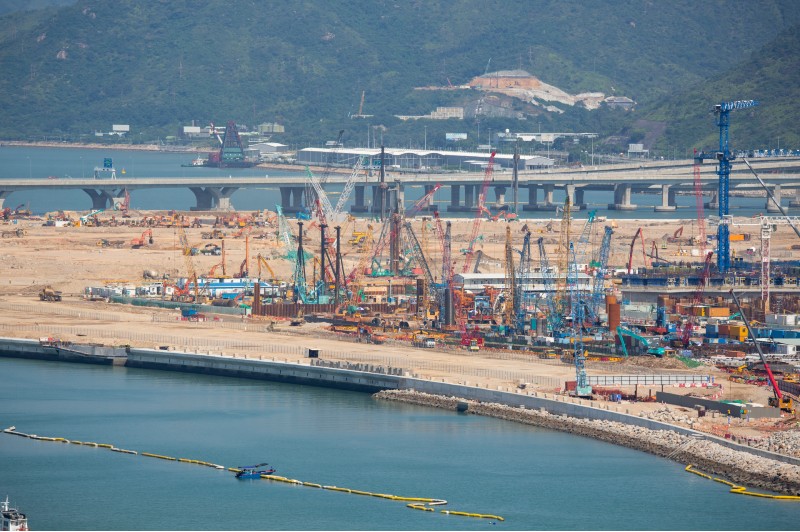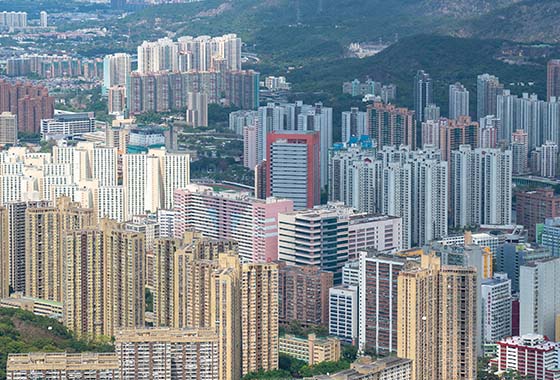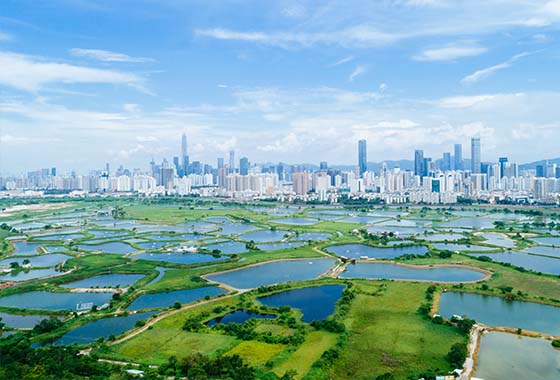Is the HK$580 billion cost of creating artificial islands off Lantau worth it?
This article appeared originally in the South China Morning Post on 30 Jan, 2023.
Authors: Ryan Ip, Vice-President and Co-head of Research, Jacqueline Hui, Researcher, and Alvin Chiu, Assistant Researcher at Our Hong Kong Foundation.

The Hong Kong government told lawmakers last month that the latest estimate for building artificial islands off Lantau had risen to HK$580 billion (US$74 billion), up from HK$500 billion. Society remains divided over the project, and it is hard to draw a definite conclusion about whether it would really be worth the huge cost. In a bid to assess the benefits more accurately, it could help to assess three major questions raised by the public about the proposal.
First, is reclamation necessary? According to the Census and Statistics Department, Hong Kong’s population is expected to peak in the next two decades. Thus, some contend that spending huge amounts of time and money on the reclamation works would be unnecessary when long-term housing demands are projected to taper off.
However, this reflects a complete disregard for the plight of those crammed into small flats while paying exorbitant rents. Also, the estimates have not taken into account recent changes in population policies. The 2022 policy address outlined a number of initiatives to complete for talent and enterprises. Given its excellent education and medical services, coupled with low tax rates and a favourable business environment, Hong Kong remains an international draw.
The initiatives could prompt more professionals to settle in Hong Kong. The goal is to attract a minimum of 35,000 talented individuals annually, who would stay for at least a year, between 2023 and 2025. This could result in a changing population structure, creating additional housing needs.
Moreover, population forecasts should be viewed with caution. While the baseline scenario indicates the population will shrink to 7.35 million by 2069, the upper range suggests it could reach 8.75 million by 2069. That is a huge discrepancy. If the population growth were to reach the higher end and land supply isn’t increased as soon as possible, Hong Kong would see a severe housing shortage. Hence, the government must build up its land reserves to avoid reliving today’s housing nightmare.
Second, is it appropriate to make sites available for different industries during an economic downturn? The vacancy rate in commercial buildings has risen amid the pandemic-induced recession, so some people do not see land creation for commerce and industry as a priority.
Compounded by the trend of working from home, long-term demands for office space could change. The authorities should consider these trends when planning commercial floor space on the artificial islands. Nonetheless, Hong Kong’s economy is expected to rebound as business activities revive. Bloomberg survey results show the median estimate for Hong Kong’s GDP growth in 2023 has risen to 3.3 per cent. In addition, commercial real estate consultancy firm CBRE estimates that, after the reopening of the mainland border, demands solely from mainland enterprises will grow by 770,000 sq ft per year.
With such a robust recovery, Hong Kong must be prepared for the imminent upturn in business activity by creating ample space. Emerging industries were hampered by inadequate land supply even before the pandemic. In 2013, for example, Hong Kong promised to offer Google 2.7 hectares of land for its regional data centre.
However, Google turned to Singapore for development, fearing that Hong Kong’s lack of stable land supply may hinder its business expansion. This shows Hong Kong must have sustainable land development plans to boost enterprises’ confidence in making long-term investments in the city.
Land supply is just the first step. The government should formulate industry policies with foresight and set clear goals for emerging industries to blossom. Moreover, another large-scale project, the Northern Metropolis, is also in the offing and some people are confused about the positioning of the two. The government should clarify how they complement each other.
Third, is money being poured down the drain? Some are concerned the high project costs will deplete Hong Kong’s fiscal reserves. Yet, the government estimates that even in a bleak economy, land sale proceeds will reach HK$750 billion. Not only would that offset the reclamation costs, but the project could also create 270,000 jobs.
Although some might see this as overly optimistic, such a figure at least provides a basis for discussion. To alleviate public concern, the government should reveal more details and explain the underlying assumptions. Huge resources have been allocated to large-scale relief measures and fighting Covid-19. In the face of various challenges, the government needs to balance the books and manage its finances meticulously.
Even so, the financial burden incurred by the artificial islands is manageable. According to official estimates, where the cost of reclamation is to be spread across 20 years, the annual expense is around HK$30 billion, accounting for less than 5 per cent of the government’s total annual expenditure of more than HK$800 billion.
Admittedly, the land can only be sold once the reclamation work is completed. Thus, the government should manage cash-flow pressures and encourage market participation through public-private partnerships, “build, operate, transfer” schemes and by issuing bonds. At the same time, it should draft the schedules for reclamation and infrastructure work. Not only is this conducive to calculating construction costs, it can also help the market form reasonable expectations for financing arrangements.
Infrastructure projects are often dubbed white elephants during the planning stage. Yet, as time passes, the contribution of these controversial projects becomes beyond dispute. Had it not been for officials’ farsightedness, we would still be relying on ferries to cross the harbour, for example. That said, public concerns are not groundless. Hopefully, the authorities will publicise more details in due course, shedding new light on cash-flow management and industry development initiatives on the artificial islands.



